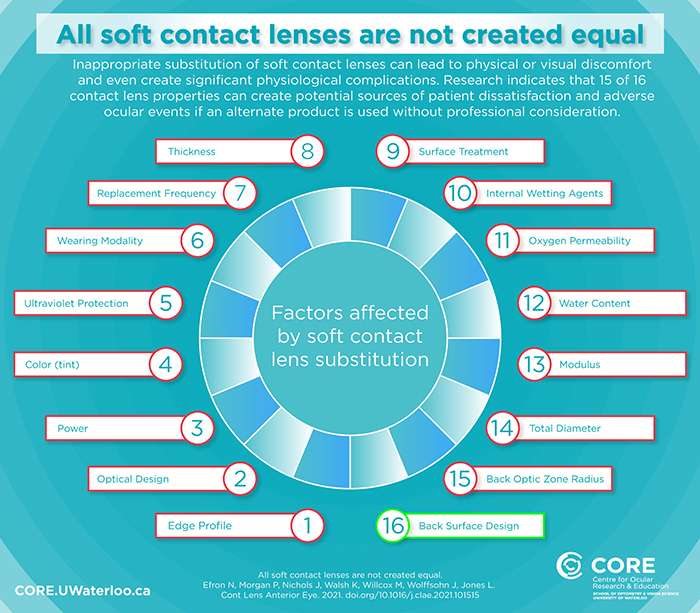 |
The paper details the multifactorial reasons that qualified eyecare professionals choose a particular contact lens, including a patient’s anterior ocular anatomy and physiology, lens handling, appearance, lifestyle, and affordability. However, those critical considerations may be ignored when purchasing from unregulated suppliers or even regulated suppliers who fail to understand that all soft contact lenses are not the same, the paper noted.
 |
The paper subsequently highlights problems likely experienced when using contact lenses other than those that have been specifically prescribed. Substitution of all but one of the properties considered (back surface design) was found to be related to at least one—and as many as six— potential sources of patient dissatisfaction and adverse ocular events.
The authors write, “Given the wide range of parameters and properties available, few soft contact lenses are identical in their clinical performance. The consequences of inappropriate substitution of soft contact lenses can vary from physical or visual discomfort to significant physiological complications.”
Dr. Jones added, “While highly trained eyecare professionals appreciate the differences between soft contact lenses, that is not well understood by some regulatory bodies, various retailers, and the public at large. My co-authors and I believe there are substantial opportunities to better illustrate those variations and the very real consequences of inappropriate substitution. We hope this paper will serve as a benchmark for advancing that discussion.”










